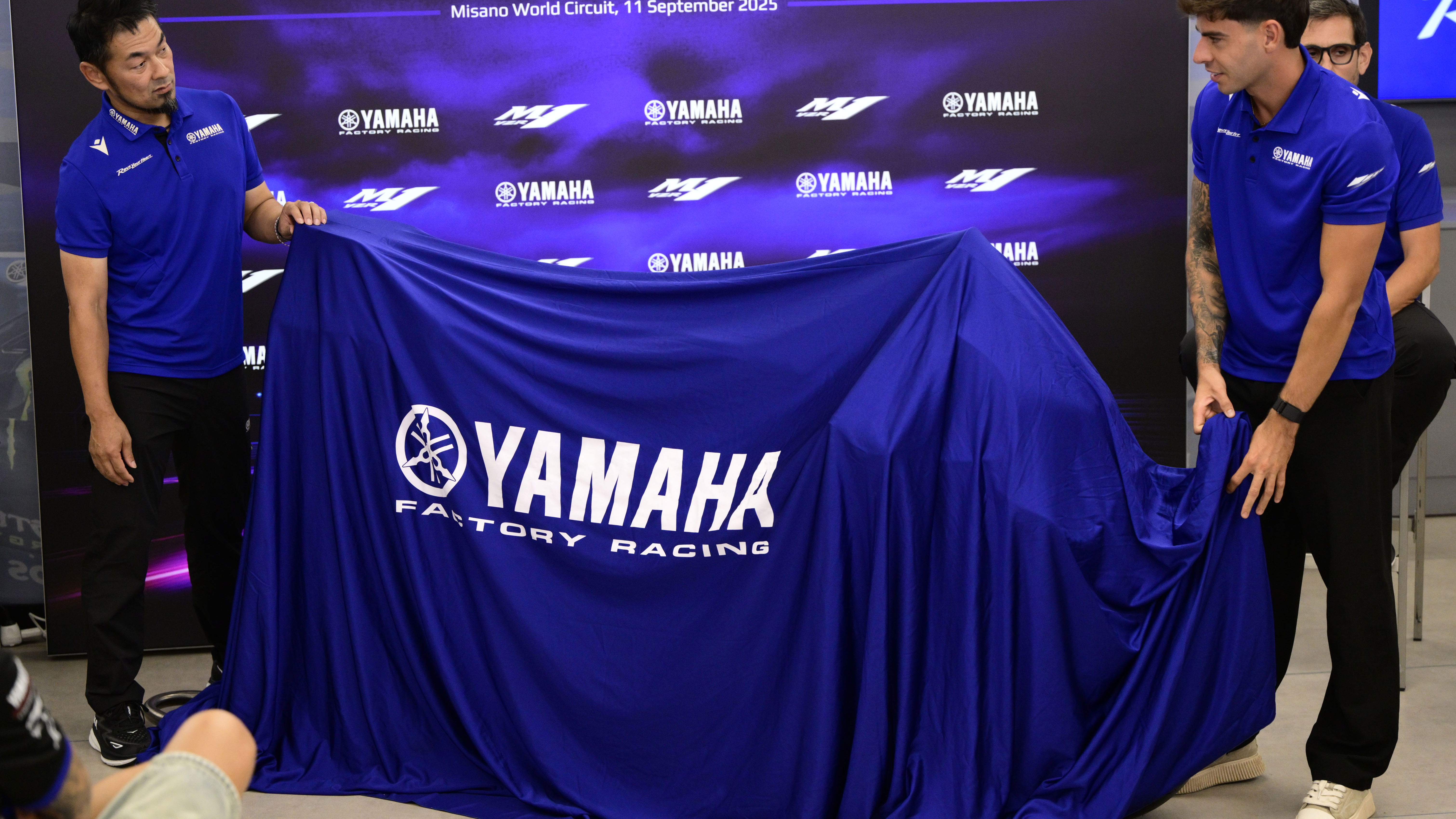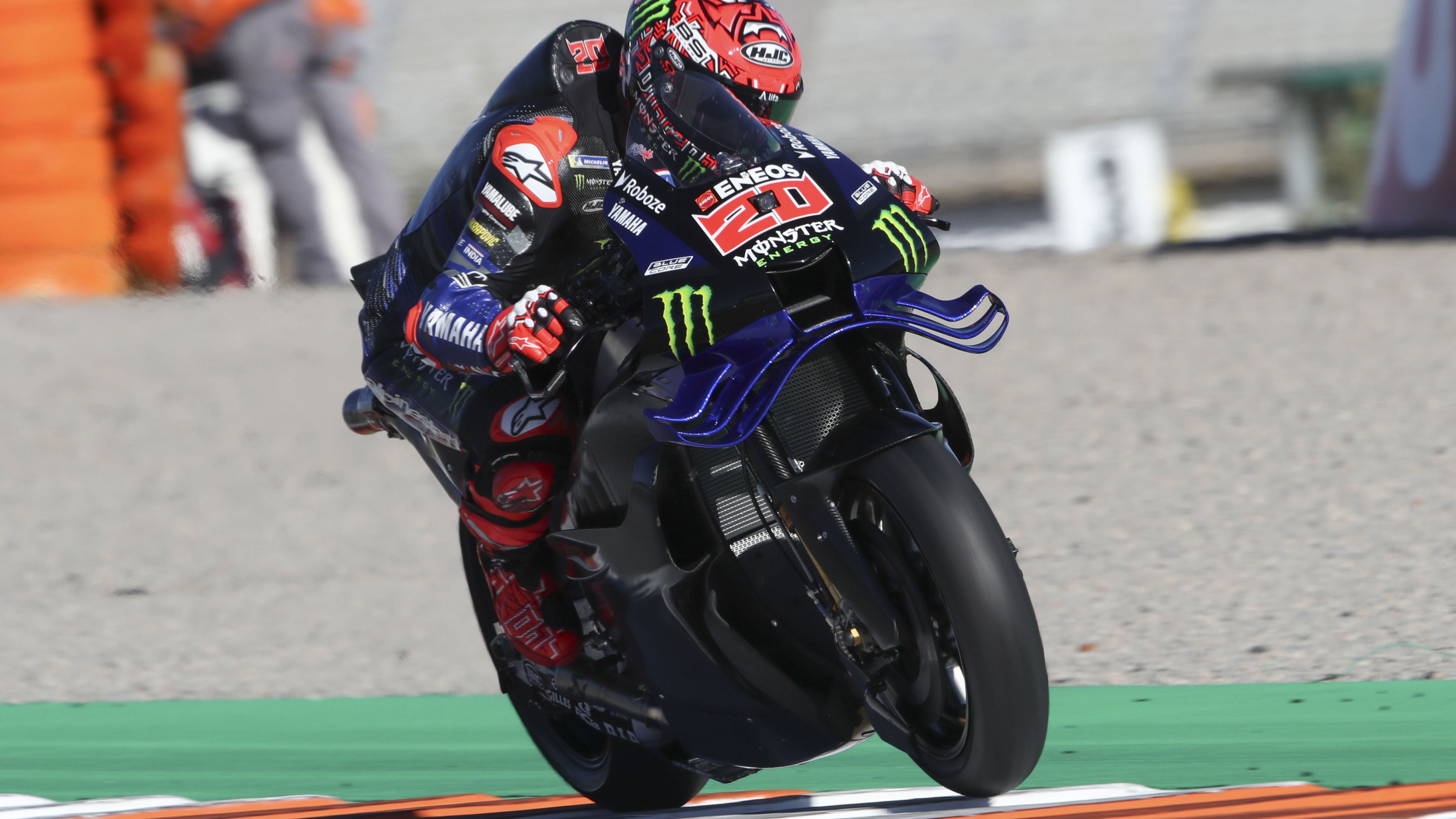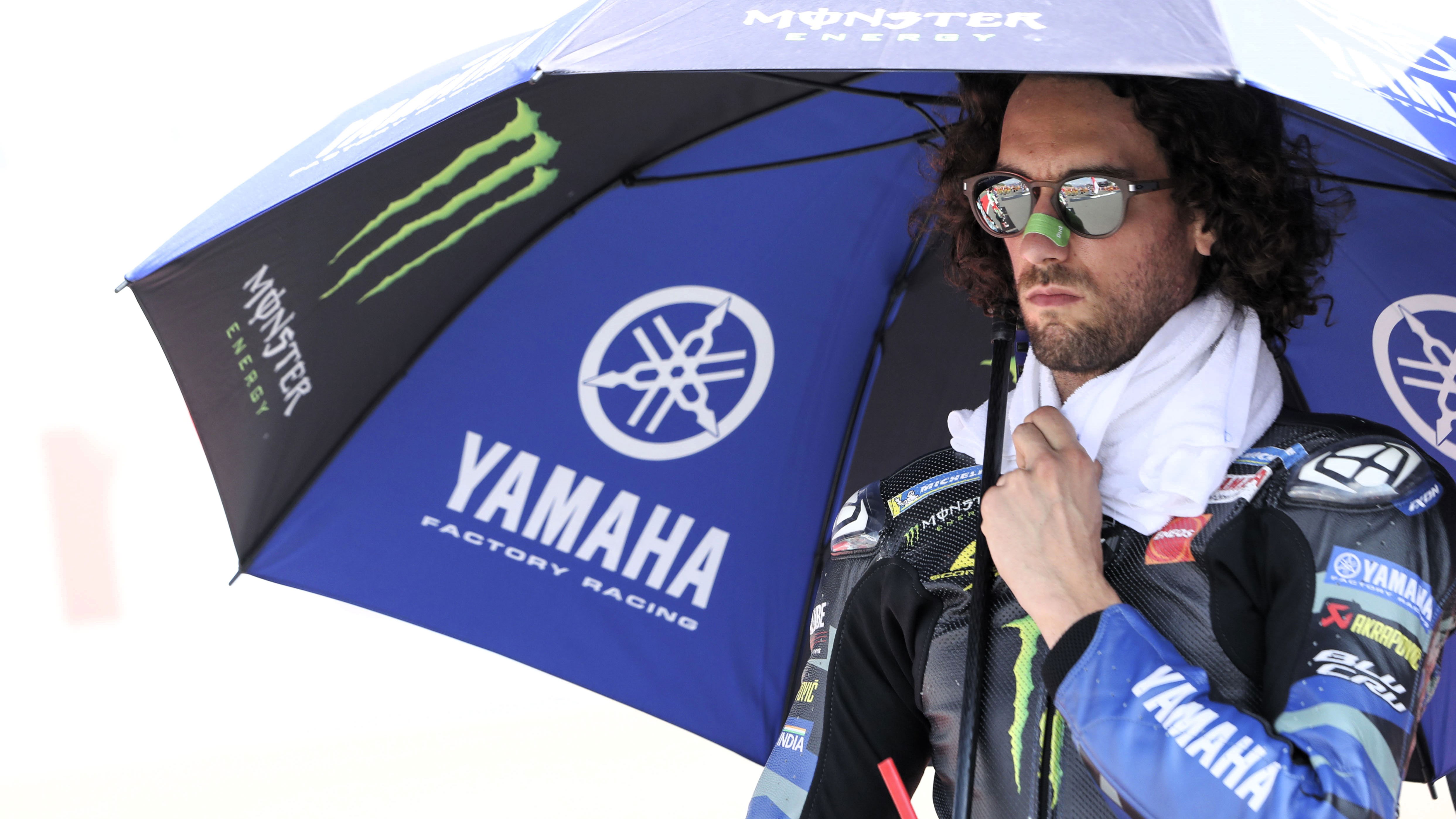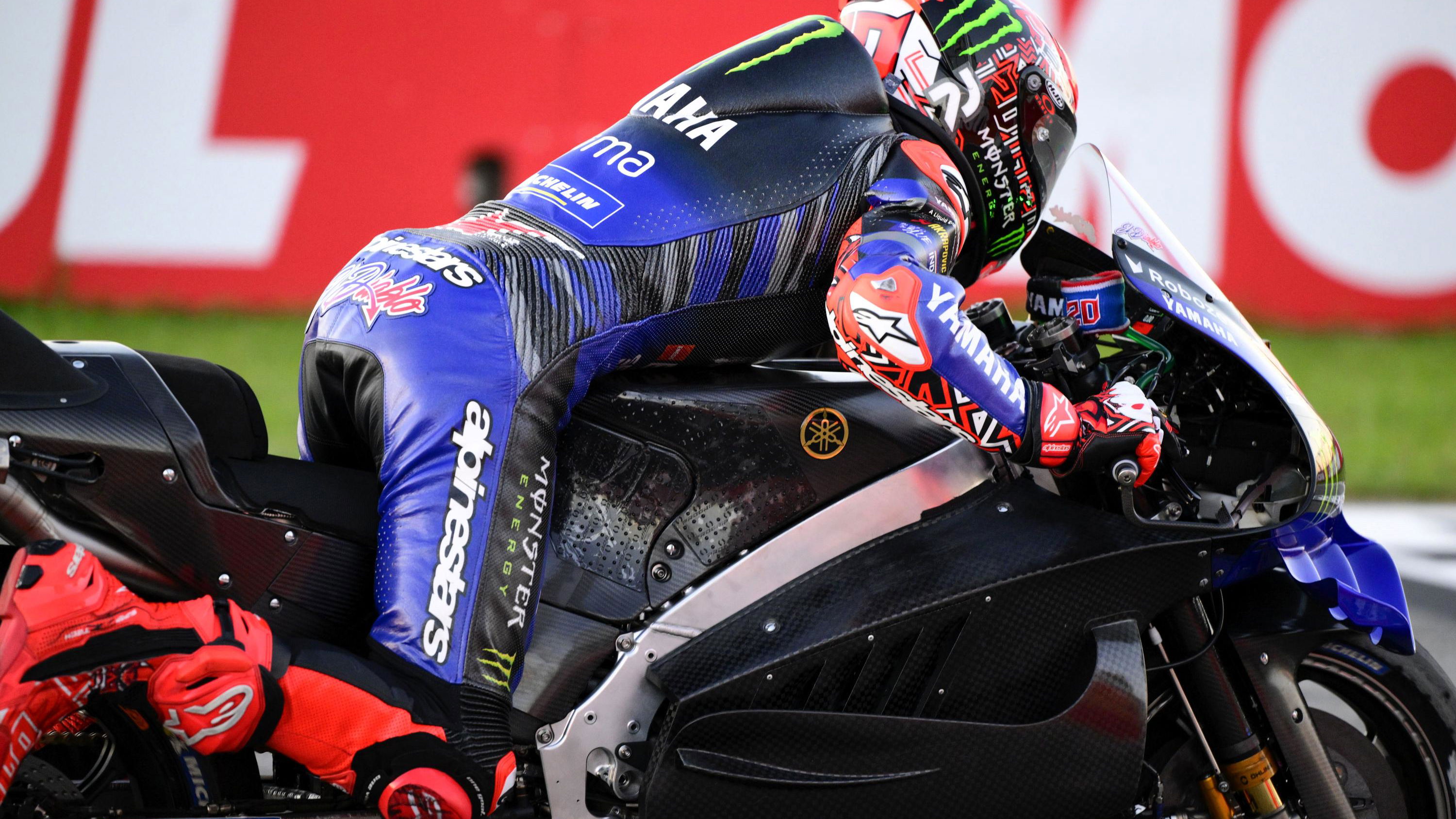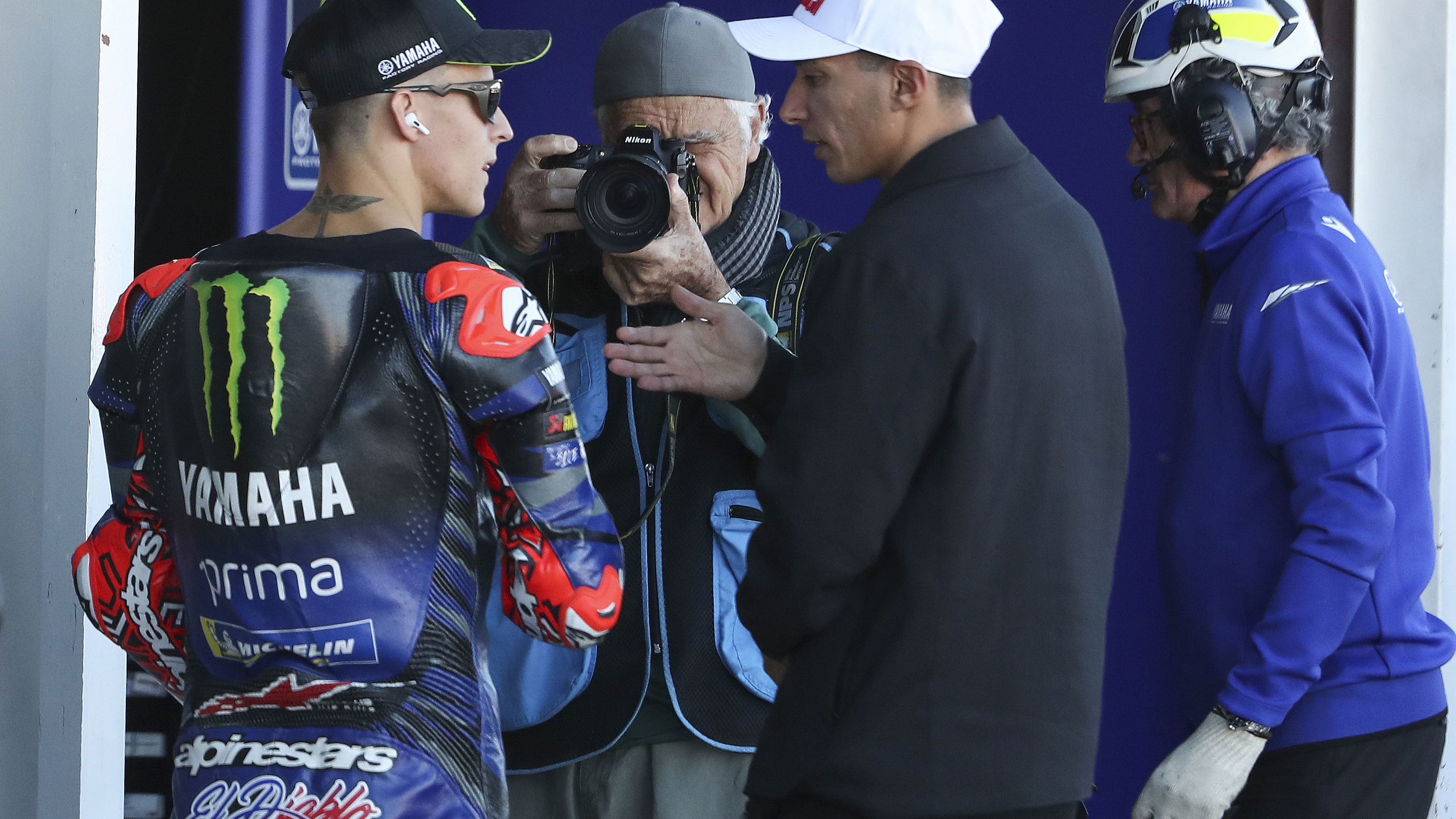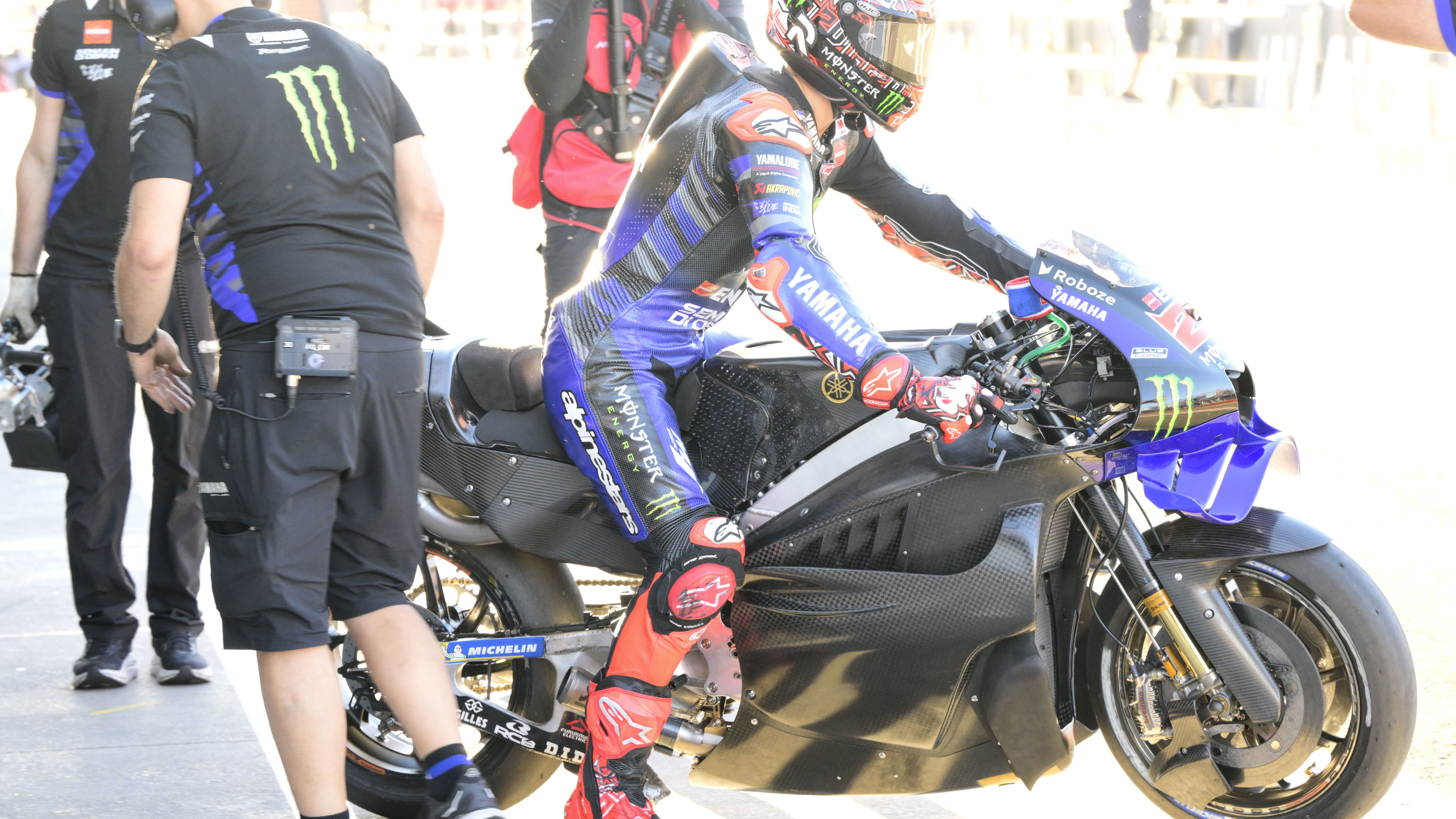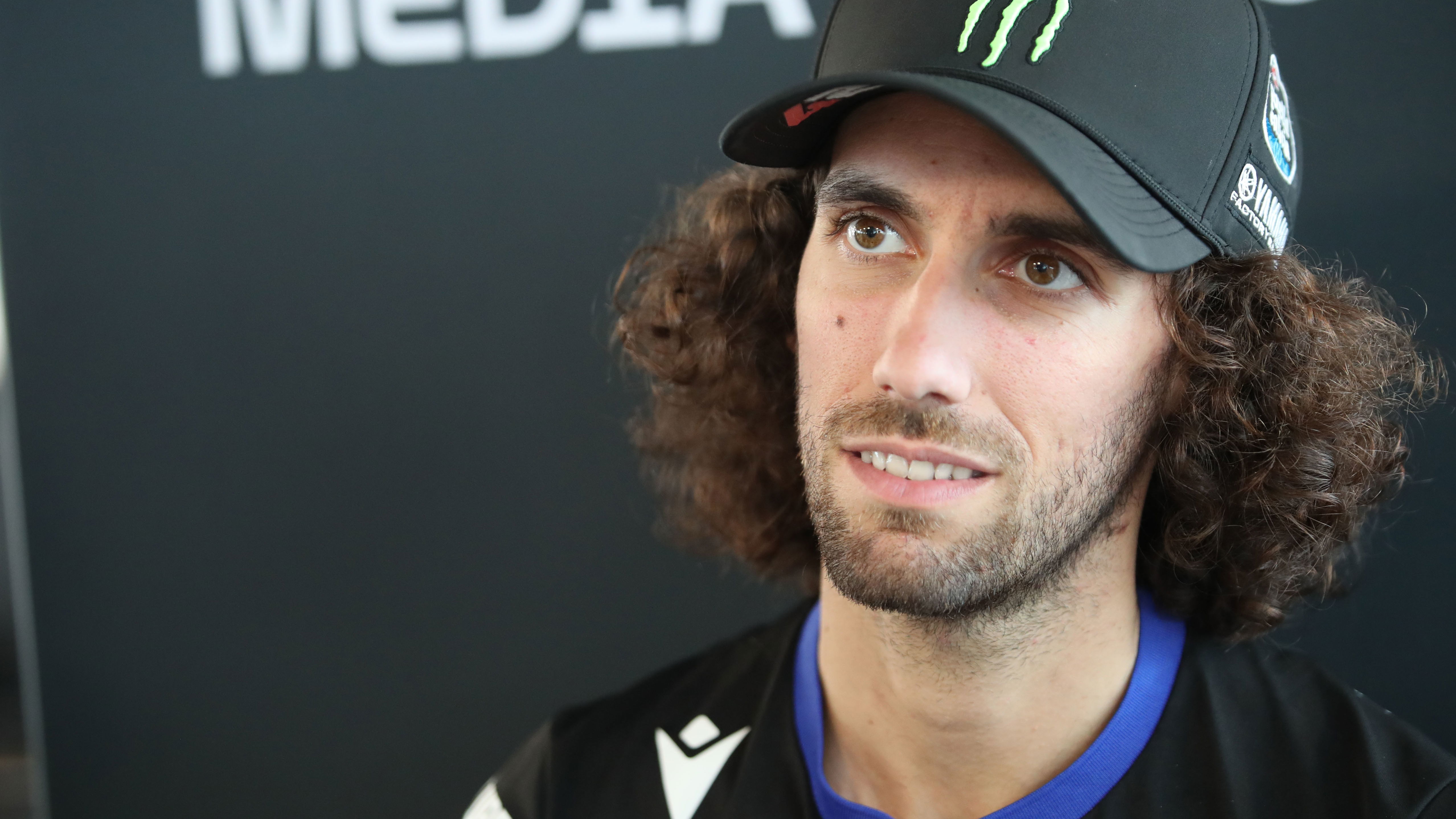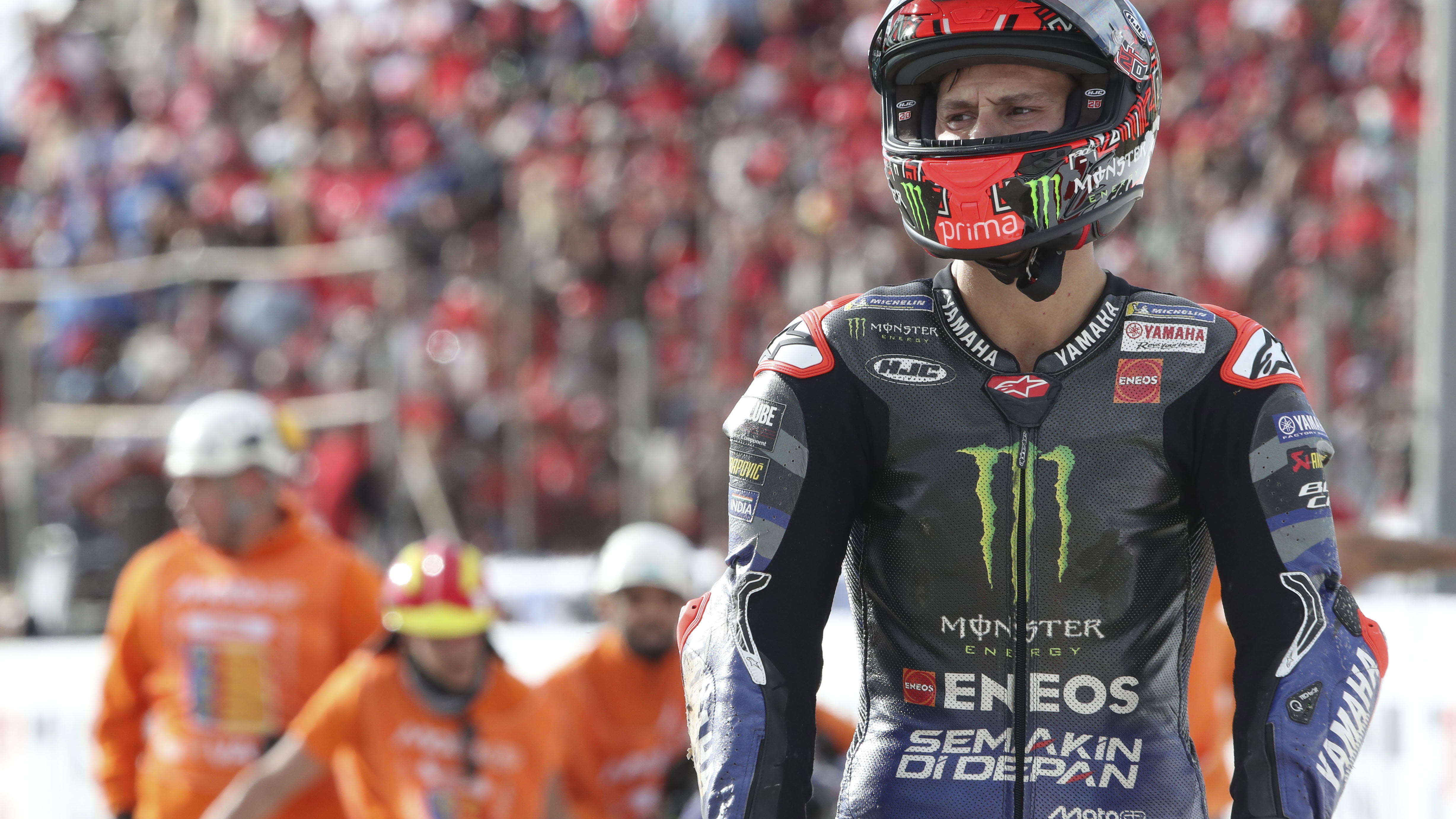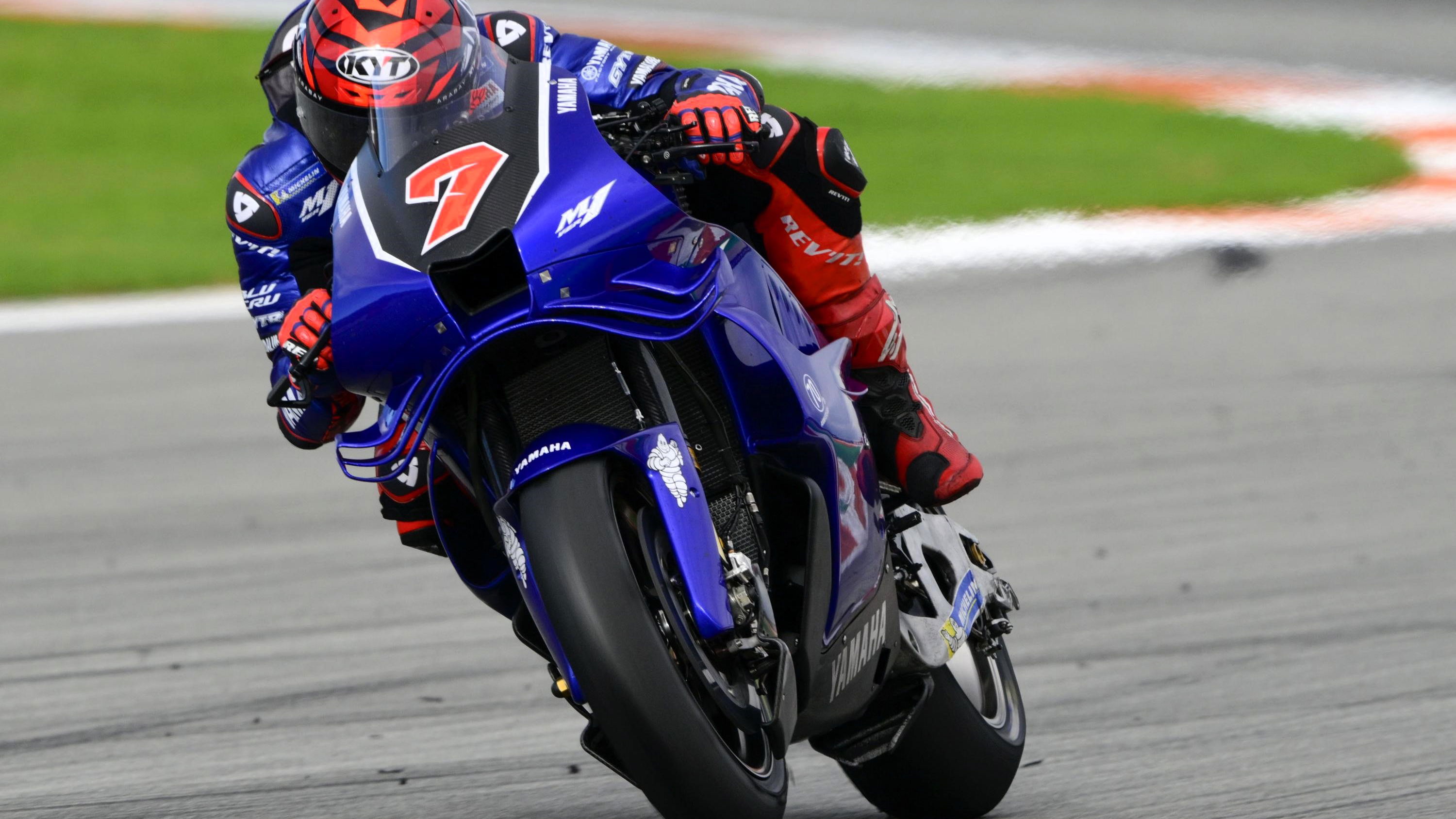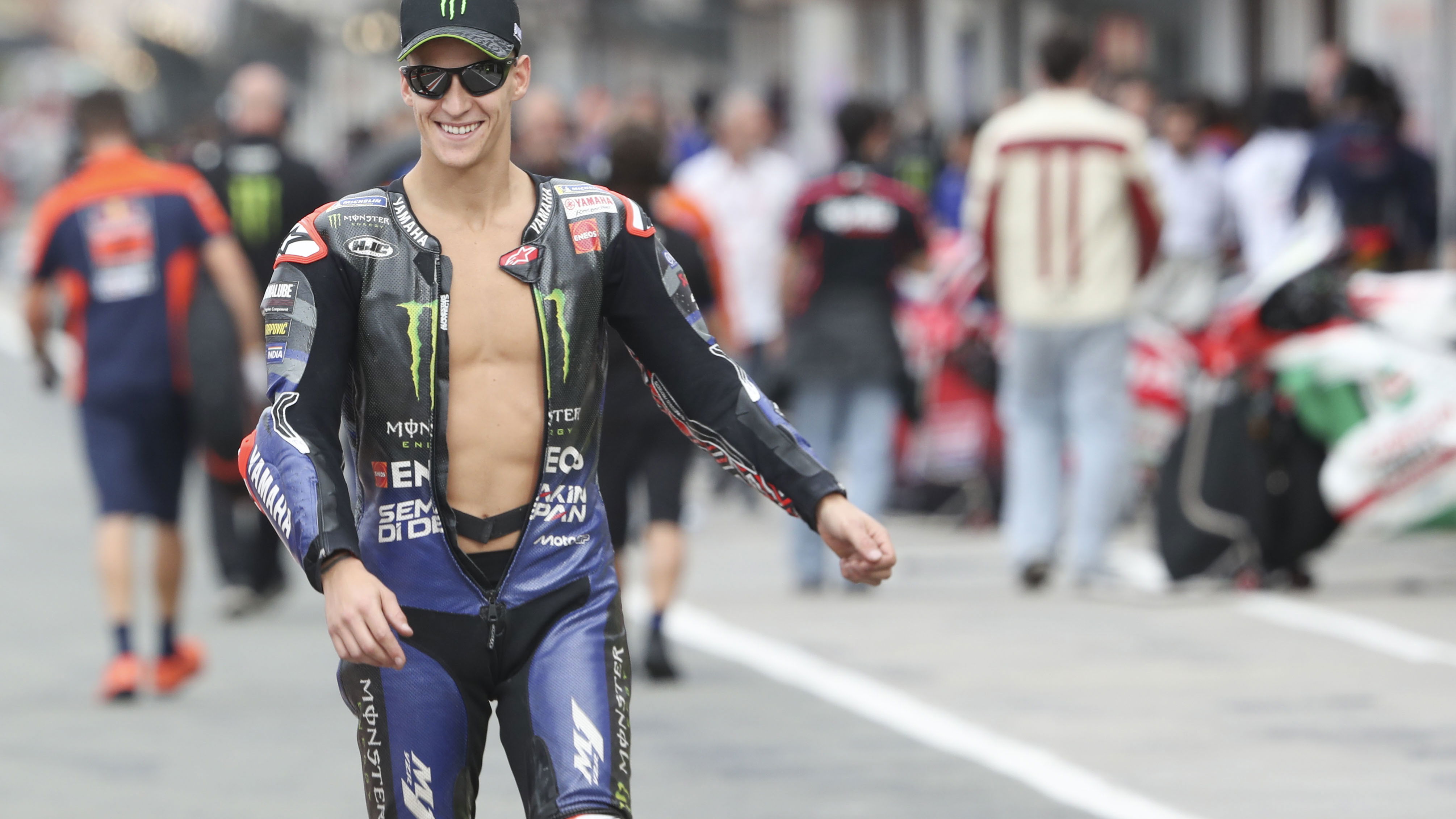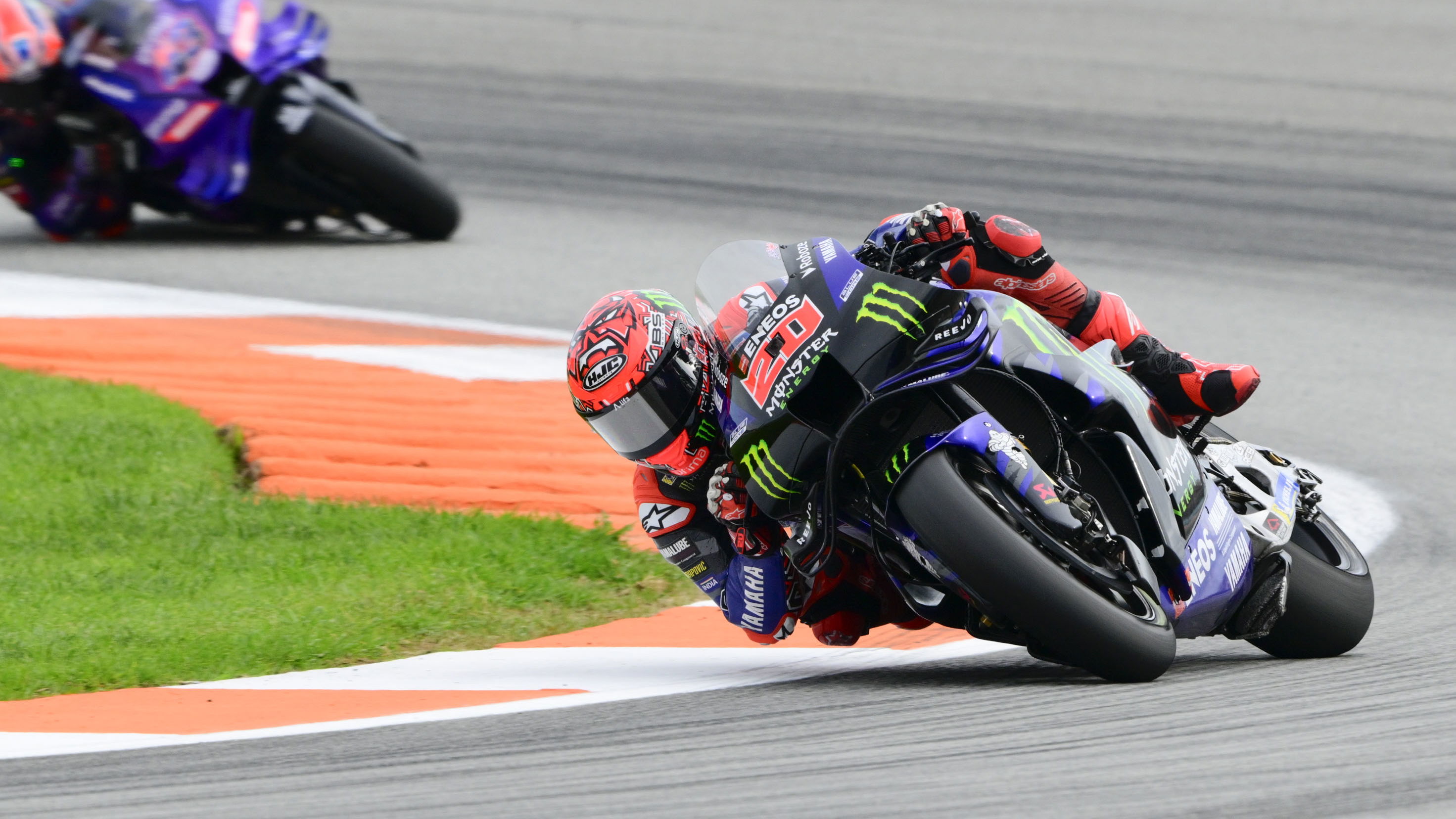Monster Energy Yamaha MotoGP

Team Statistics

About Monster Energy Yamaha MotoGP
Monster Yamaha in 2025
After suffering its first season without a podium in the MotoGP era, Yamaha hopes the fruits of its development work will pay off for factory stars Fabio Quartararo and Alex Rins in 2025.
Latest News
Team Information
Monster Yamaha in 2025
After suffering its first season without a podium in the MotoGP era, Yamaha hopes the fruits of its development work will pay off for factory stars Fabio Quartararo and Alex Rins in 2025.
Yamaha’s MotoGP history
Between 1975 and 1992 Yamaha won ten premier-class 500cc titles with grand prix giants Giacomo Agostini (1975), Kenny Roberts (1978, 1979, 1980), Eddie Lawson (1984, 1986, 1988) and Wayne Rainey (1990, 1991, 1992).
After retiring as riders, Agostini, Roberts and Rainey all ran official Yamaha grand prix teams, with big-budget sponsorship from tobacco brands, before the present Yamaha-owned ‘Yamaha Factory Racing’ team was founded in 1999 (and based in Italy).
Max Biaggi and Carlos Checa formed the inaugural ’Marlboro Yamaha Team’ line-up from 1999-2002, during which time the Roman Emperor won eight races and twice finished title runner-up to countryman and arch-rival Valentino Rossi (Honda).
Although Biaggi won twice in the second half of 2002, the initial version of the new YZR-M1 four-stroke was a big disappointment and he traded his factory status for a satellite Honda seat.
250cc world champion Marco Melandri was drafted in alongside Checa for 2003, but the M1 drifted further from the top with just one podium all season (by Tech3’s Alex Barros).
With ten years having passed since its last premier-class title, Yamaha was jolted into action and brought in Masao Furusawa to oversee a rejuvenation. Furusawa, an expert on vibrations, was seen as something of a troubleshooter within Yamaha, being placed wherever the factory had a problem that needed solving.
“I was really an amateur about racing before 2003,” Furusawa told Crash.net’s Peter McLaren during an interview before his retirement in 2011. “I had never seen a race!
“I was always changing my job in Yamaha Motors, because when there was trouble in the company they would move me around to wherever they needed me.
“I had a nickname of 'Sophisticated Troubleshooter' or 'Fixer'! It's been lots of fun for me and I've enjoyed it a lot.”
While Furusawa looked at the M1 with fresh engineering eyes, the race team management of Lin Jarvis and Davide Brivio set the sights on what seemed an impossible task: Tempting Valentino Rossi from Honda.
Despite dominating the early years of the MotoGP class, Rossi increasingly felt his ability as a rider was under-appreciated at Honda and delighted Yamaha by eventually taking up its offer.
Behind the scenes, Furusawa was already making big changes to the M1, but without any sign of improvement.
“For 2003 I had recommended to change from carburettor to a fuel-injection system and chain-driven camshafts.
“I had always approached problems as a kind of outsider, a consultant, looking in and recommending this, this and this. But doing it is different. It was such a big shock when I jumped into MotoGP in 2003. 'Wow! This is all my responsibility'.
“And the results that year [one podium] were terrible. 2003 was hell!
“I thought many things were wrong, but I was new to racing, so it was just my own ideas from logical thinking, analysis and experience. Reality is not necessarily the same. So some people were sceptical. Looking at me and thinking 'we understand what you are saying, but reality is different.'
“It can be really hard to convince everyone to go in the same direction. So I did some trick. I came up with a pretty good idea - the crossplane crankshaft [utilising 'big bang' technology] - and then right after I joined MotoGP I started a design. Half a year later the first prototype ran on the racetrack near the Yamaha headquarters.
“Everybody was looking and the first thing the test rider said was 'this bike feels slow'. So everyone looked at me, thinking 'Hmmm. You are the guy who thought of this...' And then he said 'But the lap time is so fast. It just feels slow because it is very, very smooth and stable.'
“That was Christmas time in 2003. Then Valentino Rossi came to Yamaha and rode for the first time [at Sepang] in January 2004. He is really a genius. He rode the crossplane bike for just five or six laps and then came back and said 'this bike is the best one'. Even though it was slow, because the power was not so much.
“I had prepared lots of combinations for him to try: Four-valve system, five-valve system, crossplane, single plane. And he pointed to the crossplane crankshaft bike with four-valve.
“Before, everybody was so scared to look at a new engine, because for a long time Yamaha had been successful with the five-valve. People said 'How can you throw away the five-valve system?'
“I said 'It is a very interesting system. It's lots of fun for a production bike, but the purpose of racing is not fun. Fun is ok, but the first thing we have to do is win. The problem we have had is Yamaha is losing the game for over ten years. So we have to change.'
“So the four-valve system and crossplane crankshaft was the best, but it was also a brand new engine design, which is why the power was so slow. But despite that, Valentino still pointed to that engine and said 'this is it'.
“And you need to remember that Valentino was kind of like a King. We all huddled around him when he came in after riding to listen to what he had to say - would he give 'thumbs up' or 'thumbs down' to our ideas?
“So when Valentino gave the 'thumbs up' for four-valve and crossplane crankshaft everybody knew it was the way forward and worked in the same direction.
“We didn't have much time. Only two months to the race in South Africa. So I really owe a big thanks to Valentino for making a clear and correct choice.
“Until then, maybe only 50 percent of people thought 'ok I will follow you'. The other 50 percent still thought 'that is not the reality on the race track'.
“But after Valentino said 'yes', everybody knew it was the right thing and we were able to get a lot of power from people all working as a team. That is one reason why we have had such good results.
“Maybe if Valentino hadn't come to Yamaha, I would have been [jokes about a noose around his neck!].”
Rossi stunned the MotoGP world by winning on his Yamaha race debut in South Africa and romping to the title, which he then defended with ease in 2005.
However, persistent chatter problems with the 2006 chassis combined with progress by Honda and Ducati put Yamaha and Rossi on the back foot.
“In 2006 we made a mistake with the chassis. We designed a chassis that was much more flexible on the lateral side, but to do that we needed to make some parts with a thin cross-section [so that they would flex more] which can be pretty hard,” Furusawa later explained.
“So instead of decreasing the stiffness of these parts, we reduced the thickness of the frame in the middle. Point-to-point the overall stiffness was the same, but now the distribution of the stiffness was not 'smooth' and not changing in a consistent way along the bike.
“That makes for a pretty bad chatter problem.
“One of the solutions is to keep continuous stiffness changes from the head to the rear. Even then you can still get some chatter, but not so much.
“This chatter phenomenon is probably the last remaining problem to be cracked by motorcycle engineers.”
Yamaha found a solution by the second half of the season, allowing Rossi to catch and then pass Repsol Honda title leader Nicky Hayden. A third successive Yamaha title, and sixth in a row for Rossi, looked a formality, but a shock mistake at the Valencia finale saw the popular American snatch victory away from the #46.
The start of the 800cc era dealt a further blow to Yamaha, which like Honda, was blown away by the Ducati-Bridgestone-Casey Stoner combination.
But after switching from Michelin to Bridgestone, Rossi and Yamaha retaliated with a return to title glory in 2008, then what would be the Italian’s ninth and final grand prix crown in 2009.
That season saw Rossi’s nearest title opposition come from within his own team, in the form of rising star Jorge Lorenzo, a race winner from his rookie 2008 campaign, on Michelin tyres.
The increasingly tense Rossi-Lorenzo duel, which saw a wall dividing the Yamaha garage remain in place even after the single-tyre rule made such steps unnecessary, looked set to escalate in 2010.
But it was brought to an early end when Rossi fractured his leg in practice for his home race at Mugello, clearing the way for Lorenzo to take his first MotoGP crown.
Rossi took one more win after his return but had already decided to leave for Ducati in 2011 and took his whole crew with him.
That left Lorenzo to carry Yamaha’s hopes, but he couldn’t contain the combination of Casey Stoner and Honda.
AMA and World Superbike champion Ben Spies, a podium finisher in his rookie MotoGP season with Tech3 Yamaha, was parachuted into Rossi’s factory place and won a race at Assen on his way to sixth overall.
Lorenzo struck back with one of his best seasons in 2012, finishing first or second in 16 of the 18 races he finished to be crowned a double MotoGP champion.
Spies meanwhile struggled to tenth in the standings and was replaced by the returning Rossi for 2013.
While Lorenzo fought a season-long title battle with Honda’s rookie star Marc Marquez, only losing out at the finale, Rossi put the Ducati misery behind him with a return to victory at Assen.
The pair were an evenly matched second (Rossi) and third (Lorenzo) behind Marquez in 2014, setting the scene for what would prove to be one of the most controversial title battles in recent memory in 2015.
While Marquez and Lorenzo faltered, Rossi delivered 12 podiums in a row, including four wins. But Lorenzo was soon back up to speed and the faster of the Yamaha riders, hunting down The Doctor to be almost within reach by the penultimate Sepang round.
One of the most dramatic weekends in MotoGP history then began with Rossi accusing Marquez of trying to assist Lorenzo at the previous Phillip Island race, before the #46 and #93 clashed in the grand prix, leaving the Honda rider on the ground and Rossi with penalty points.
When combined with an earlier penalty point for obstructing Lorenzo in qualifying at Misano, it meant a back-of-the-grid start for the Valencia finale.
Lorenzo went on to win the race and title, with Rossi again accusing Marquez of assisting the #99, this time by failing to attack. The bitterness saw Yamaha cancel their world championship party, a gesture that probably contributed to Lorenzo signing for Ducati in early 2016.
Rossi and Lorenzo finished second and third respectively to Marquez during the first year of Michelin single-supply tyres and a standard ECU. The evergreen Rossi’s talents arguably only started to fade in 2017 when he took what would be his final MotoGP win at Assen but was regularly outpaced by new team-mate Maverick Vinales.
Ex-Suzuki race winner Vinales made a storming start to his Yamaha career with three wins in the opening five rounds of 2017 but didn’t win again until the closing stages of 2018.
Sporadic Vinales wins continued in 2019 and 2020, after which Rossi was persuaded to move aside for rising star Fabio Quartararo, a multiple race winner for the Petronas Yamaha team.
Although Vinales won the opening round of 2021, Quartararo soon took control and – despite late pressure from Ducati’s Francesco Bagnaia - rode to Yamaha’s first MotoGP title since 2015.
Vinales wasn’t present to see the celebrations. Winless since the opener, and having already changed key members of his crew such as Ramon Forcada and Wilco Zeelenberg in the past, Vinales and Yamaha negotiated a split during the summer break.
More drama was to follow when Vinales was suspended by Yamaha from the second Austrian round after attempting to deliberately damage his engine (by over-revving) due to frustration at a technical problem the previous weekend.
An instant split was duly agreed and Vinales later returned with Aprilia, while Franco Morbidelli was promoted from Petronas to take over alongside Quartararo.
The 2022 season saw Quartararo, already concerned by Yamaha’s decline in the second half of 2021, nonetheless lead the standings by the summer break. But Quartararo was left almost a spectator in the second half of the campaign as Bagnaia and Ducati overcame a massive 91-point deficit to clinch the MotoGP title.
The next best M1 of team-mate Morbidelli was only 19th and, with the European brands continuing their rise to dominance over the Japanese in the new aerodynamic era, 2023 saw Yamaha’s first winless MotoGP season since 2003.
Looking to learn from the new ‘aggressive’ European approach, Yamaha signed an agreement with ex-F1 designer Luca Marmorini to tune its engine in 2022, Dallara to assist with aerodynamics and then hired several key staff from Ducati ahead of 2024.
Nonetheless, Yamaha suffered its worst season of the MotoGP era in 2024, failing to take a single podium, with star rider Quartararo just 13th in the world championship.
But while Yamaha’s final season under the leadership of Lin Jarvis failed to deliver on track, where they beat only Honda, they could at least boast the re-signing of Quartararo and tempting the title-winning Pramac team away from Ducati to become Yamaha’s new satellite team.
There was also major technical news in the form of a new V4 engine project, to be developed alongside the existing Inline4 powerplant.
Quartararo's new team-mate Alex Rins was only 18th in the standings with a best race finish of eighth. However, the technical contribution made by the former Suzuki and Honda race winner was praised by Yamaha and also resulted in a new deal until 2026.


